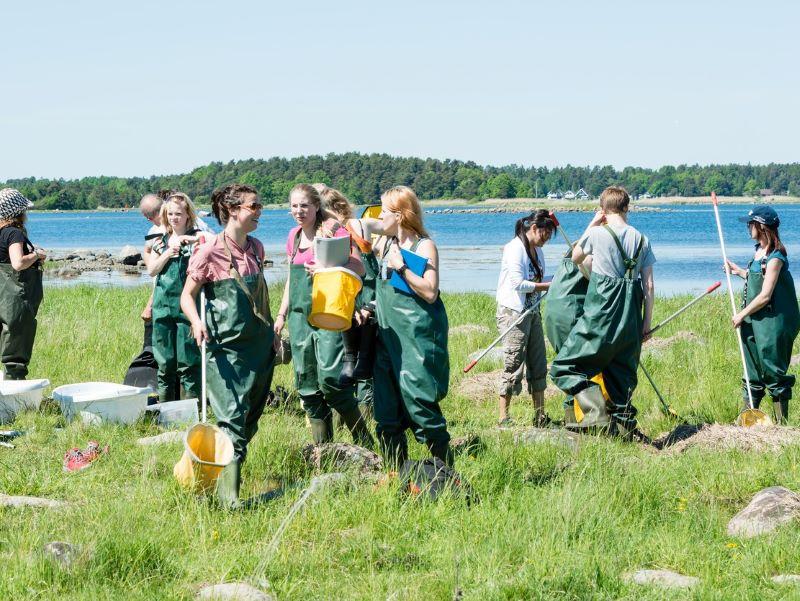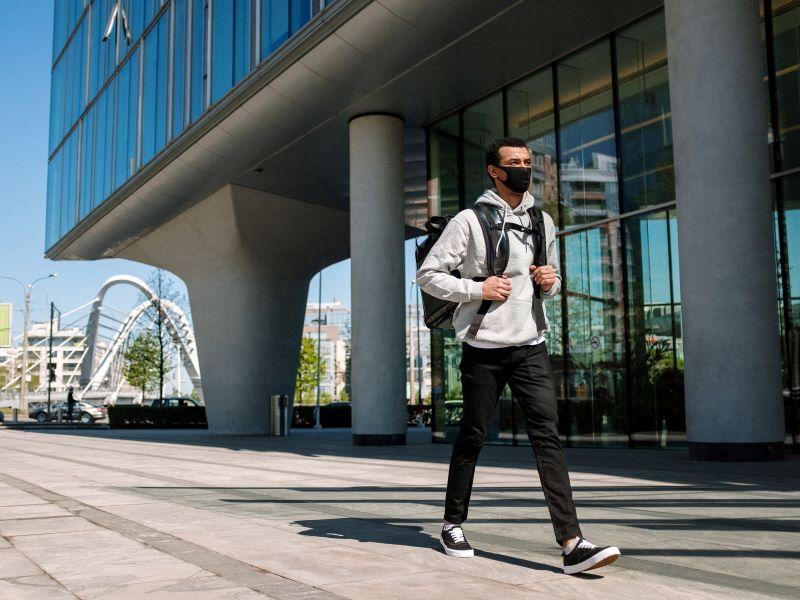There is growing awareness of the educational, community-building, sustainability and physical and mental health benefits of stepping outside the classroom, lab or lecture hall when teaching. And teaching across the University of Edinburgh already takes place in a range of settings from campus grounds, to Holyrood Park, the Royal Mile, the Writers’ Museum and further afield.
With the focus now on a return to in-person teaching, I want to share tips and resources that we developed prior to, and during, the pandemic to inspire lecturers to take learning outdoors across the city of Edinburgh and beyond.
1. Learn anywhere – Thanks to the Scottish Open Access Code, we can work with our students pretty much anywhere, across our beautiful campuses and beyond, save for a few rare exemptions. Check what the rules are where your university is based, but there are unlikely to be any rules against taking learning outdoors, and there are no special skills or equipment required. Outdoor learning is complimentary to indoor and online learning, rather than being in opposition to them. We encourage you to think about ways you can combine the three for an extended form of hybrid learning in places. This can mean asking students to step outside their own homes for directed and online activities, even when these are far from campus and other students.
- Embodied learning: how to bring movement into the classroom, and why it matters
- Take your online teaching outside
- How to embed public engagement into your teaching and research activities
2. What or who is local to you? – Consider your programme and course aims and outcomes, and think about places that might bring these topics to life. You might start by thinking about topic-relevant places, events or organisations that are accessible for you and your students. There’s no requirement to meet on campus when face-to-face teaching, so ask your students to meet you somewhere different but relevant. While there, you might start by simply doing what you would normally do – lectures, seminars, workshops – in a new but appropriate setting. From here, you might think about how to adapt what you are already doing so that students are actively engaged in places and spaces – whether that is organisations, communities or landscapes – in a way that is experiential and that helps develop the desired graduate attributes.
3. Supervisions and tutorials on the go – As a simple way to start moving learning outside, why not ask students you are supervising or personal tutees if they’d be interested in a walking tutorial. Try a few circular walks near your usual teaching spaces, perhaps a 30-minute circuit and a one-hour circuit for different meeting lengths. Aim for quieter spaces, like the campus grounds, public squares, or local green spaces.
4. Small groups – Walking can also be great for group tutorials and workshops. You can provide groups with seminar questions to consider as you walk or travel to locations for plenary discussions or use breakout groups for discussing readings. A top tip is to ask students to bring something warm and waterproof to sit on. Or, when this becomes something you do regularly, consider getting hold of a few old camping mats and cutting them into sit mats that you bring along with you. Encourage groups to ask questions about what they find around them, make connections between what they see in these different places and what they have learned online or in previous lectures, tutorials or workshops.
5. Large groups – If your classes number in the hundreds of students, you might think of ways to get learners outside that don’t rely on your being there at the same time. Consider podcast lectures in which you encourage students to visit appropriate locations as they listen – resources such as the educational tours app Curious Edinburgh are great for this, but you can also make your own resources. You might ask students to meet in small groups in different topic-relevant places to engage in group activities and discussions that they then report back on, blog or vlog about, or present in workshop groups.
6. Thinking about equality and safety – Besides the pedagogical benefits, there are obvious safety benefits to outdoor teaching. One of these is the reduced risk of spreading Covid-19. Other benefits are those to mental and physical health and avoiding prolonged periods of sitting. But alongside these benefits, we must consider possible risks of taking teaching outside. As an issue of equality and access, we need to consider that some students may be unable or unwilling to take part for any number of visible and invisible reasons – so it’s important to consider how to make reasonable adjustments or how students who cannot attend will be supported to meet associated learning outcomes.
7. Thinking about logistics – Students shouldn’t need any more specialist equipment than they would usually take to campus – but you might want to remind them to wear appropriate footwear if you intend to head somewhere muddy, for instance. It’s important to communicate clearly what the plan and timings are, as students might not be used to meeting off campus. This needs to include communication with timetable administrators. One top tip is to include a map and guidance on where to meet, highlighting local public transport and other useful facilities such as public toilets. When considering the weather, try to timetable key excursions for the warmer months. Check more than one weather forecast on the lead-up to the day to get an overview of the likely conditions. Most outdoor teaching can be done in light rain, but do consider the cold, especially in combination with wind, rain or snow – it’s fine to cancel and make other arrangements.
8. Do a light-touch review – Ongoing reviews will help you refine your outdoor teaching and empower you to become more adventurous. Reviews can be led by self-reflection, talking to colleagues or student feedback. At the start, keep it simple and consider if the intended learning outcomes have been met, if there are any improvements to be made to the risk assessment, and whether the activities could be made more accessible.
9. Make the most of serendipity – A major attraction of many universities is the cultural, historical and geological richness of their surroundings. Edinburgh, for instance, is a hive of activity, and learning outdoors brings an added benefit that things may happen around you and your students as you learn. Whatever these things may be, there is often a possibility to link them to the topic at hand, indeed students often make these connections themselves and want to share them.
While teaching outdoors may feel novel at first, we hope it will soon become a part of your everyday practice and you will wonder why you didn’t start sooner. We recommend starting simply and enjoying the process. We have found that when we take learning into outdoor places and spaces, the unique environments enrich student experiences in ways we couldn’t have imagined.
David A. G. Clarke is a teaching fellow in outdoor learning and sustainability education at the Moray House School of Education and Sport at the University of Edinburgh.
If you found this interesting and want advice and insight from academics and university staff delivered directly to your inbox each week, sign up for the THE Campus newsletter.




comment